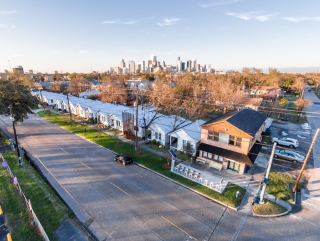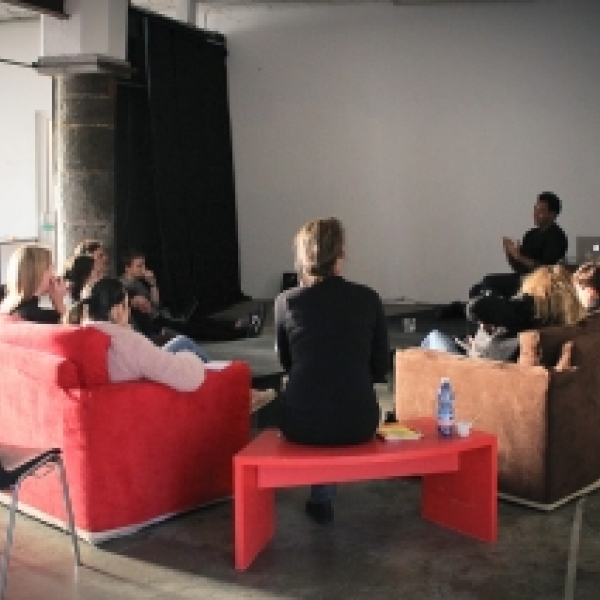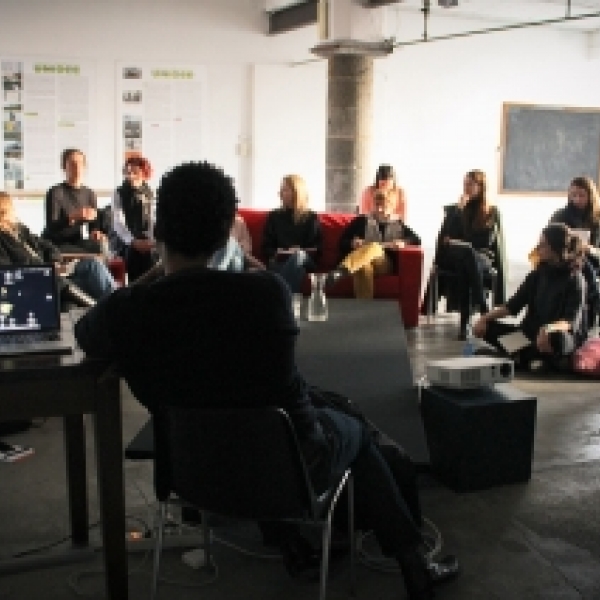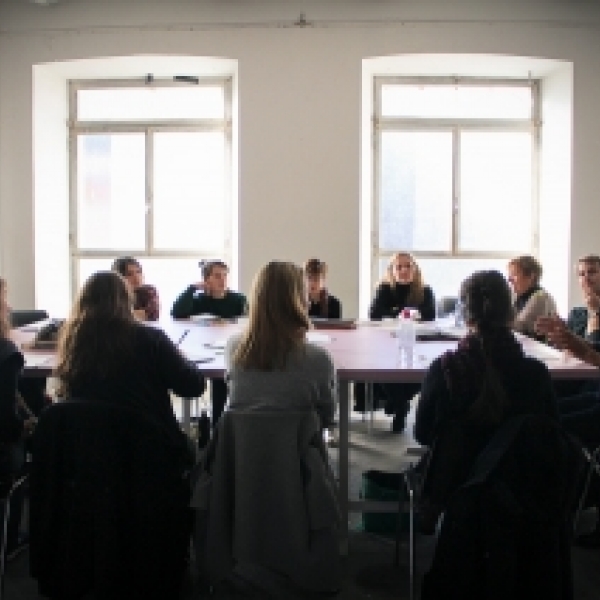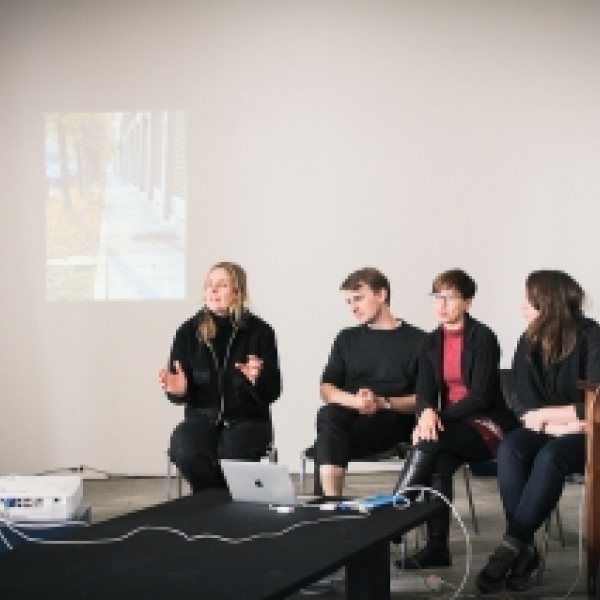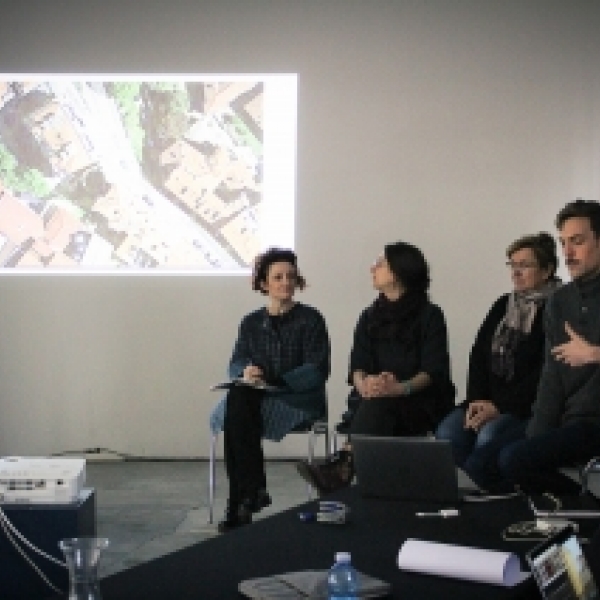Socially and Community Engaged Art. What is it and who is doing it?
The objective of this module is to explore what is social and community engaged art and who is doing it. During this module, participants will explore various projects and artists to gain insight into what determines a social and community engaged art and what distinguishes it from everyday social and community engaged work.
Embodied in all social and community engaged work is a desire to affect some practical outcome. Within all art there is a desire of some symbolic or poetic meaning. This module will draw upon the experience and sensibilities of the mentor, guest, and participants to identify the most interesting social engaged work and critique it based on its practical and symbolic/ poetic impact. Our objective will be to explore a framework of critique of social and community engaged art.
Because there is such similarity between social and community engaged art and social and community engaged work, we will explore the following questions: Who has authority to determine when social and community engaged work is art or not? What does it mean for a social and community engaged work to be called art? What is the political significance of social and community engaged art?
Much of the discourse of this module will be based on readings and films of work that takes place around the world, but a big part will be based in research of the surrounding communities of Biella. Each day will have field explorations in search of valuable and meaningful social and community engaged work in Biella.
SCHEDULE
November 20th
morning
Guided tour to Cittadellarte (Curated by Elena Rosina), including the Pistoletto, Arte Povera collections and temporary exhibitions.
Introduction to the Theorem of Trinamics, the symbol of the Third Paradise and the concept of Demopraxy.
afternoon
Brief introductions of participants.
Presentation by Rick Lowe: Towards Social Sculpture.
Presentation by Elpida Rikou.
Group discussion.
Assign reading for November 21st discussion: Joseph Beuys, Energy Plan for Western Man, Chapter 2, “Social Sculpture”.
November 21st
morning
Discussion about Joseph Beuys concept of social sculpture (Reading provided).
Participants presentation of their work.
afternoon
Discussion about projects or works which participants are interested in.
Explore the city of Biella for interesting social and community engagement.
Group discussion.
Assign reading for November 22nd discussion: Ben Davis, A Critique of Social Practice Art.
November 22nd
morning
Discussion about Ben Davis, A Critique of Social Practice Art.
Discussion about projects or works which participants are interested in.
afternoon
Discussion of projects or work participants are interested in.
Explore the city of Biella for interesting social and community engagement.
Group discussion.
November 23rd
morning
Film: Uus Maailm (New World)
Discuss how the film relates to social and community engaged art.
afternoon
Explore the city of Biella for interesting social and community engagement.
Group discussion.
November 24th
morning
Discussion: Identify the most important values needed for working in the social and community context. Define a best examples list.
afternoon
Explore the city of Biella for interesting social and community engagement.
Final group discussion.
REFERENCES
The mentor will prepare a reader for participants with key texts and films, some of which will be discussed during the week. The reader will include pieces by authors, artists, curators and intellectuals, such as:
Books (Selected Chapters)
• Joseph Beuys, Joseph Beuys in America: Energy Plan for the Western Man, Four Walls Eight Windows, New York, 1993. Chapter 1: “Social Sculpture”.
• Arthuro Schwartz, Marcel Duchamp, The Complete Works of Marcel Duchamp, Thames & Hudson, 2003. Chapters: “From The Fourth Dimension to The Ready-made”; “From The Ready-made to A Rembrandt Used as an Ironing Board”.
Books (For further readings):
• Ellen Dissanayake, What Is Art For?, University of Washington Press, 2002.
• John Dewey, Art as Experience, TarcherPerigee, 2005.
• Grant Kester, Conversation Pieces: Community and Communication in Modern Art, University of California Press, 2013.
• Grant Kester, The One and the Many: Contemporary Collaborative Art in a Global Context, Duke University Press, 2011.
• Tom Finkelpearl, Dialogues on Public Art, The MIT Press, 2001.
• Tom Finkelpearl, What We Made, Duke University Press, 2013.
• Pablo Helguera, Education for Socially Engaged Art: A Materials and Techniques Handbook, Lightning Source Inc, 2011.
Film:
• Andrew Garrison, Third Ward Texas, 2007.
• Jaan Tootsen, Uus Maailm (New World), 2011.
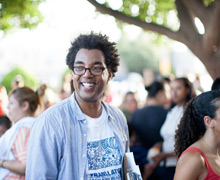
BIOGRAPHY
Rick Lowe is a Houston-based artist. His work has appeared in: Documenta 14, Athens/ Kassel; the Venice Architecture Biennale; Contemporary Arts Museum, Houston; Museum of Contemporary Arts, Los Angeles; Neuberger Museum, Purchase, New York; Phoenix Art Museum; Kwangju Biennale, Kwangju, Korea, and the Kumamoto State Museum, Kumamoto, Japan.
He is best known for his “Project Row Houses” community-based art project that he started in Houston in 1993. Further community projects include the “Watts House Project” in Los Angeles, the “Borough Project” in Charleston, SC (with Suzanne Lacy and Mary Jane Jacobs), and the “Anyang Public Art Program 2010” in Anyang, Korea.
Among Rick’s honors are the “Rudy Bruner Awards in Urban Excellence”, the “AIA Keystone Award”, the “Heinz Award in the Arts and Humanities”, the “Skowhegan Governor’s Award”, the “Skandalaris Award for Art/Architecture”, and the U.S. Artists Booth Fellowship. He has served as a Loeb Fellow at Harvard University, a Mel King Fellow at MIT, an Auburn University Breedan Scholar, and a Stanford University Haas Center Distinguished Visitor.
President Barack Obama appointed Rick to the National Council on the Arts in 2013; in 2014 he was named a MacArthur Fellow.
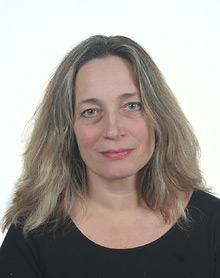
GUEST
Elpida Rikou (Athens, 1963) has studied sociology, social psychology, anthropology and visual arts in Athens and Paris. She teaches Anthropology of Art at the Athens School of Fine Arts since 2007. She is the editor of “Anthropology and Contemporary Art” (Alexandria, 2013), and the co-editor of “Fonés” (a collection of works on human voice, nissos, 2016). She has published articles in scientific periodicals, edited collections, art catalogues and newspapers and coordinated several art projects with an interdisciplinary character (i.e. TWIXTlab, Value/4th Athens Biennale, Learning from documenta, etc.) in which she also participates as an anthropologist and a visual artist.
The residency fee includes accomodation, half-board and Arci's Annual Pass Membership.
